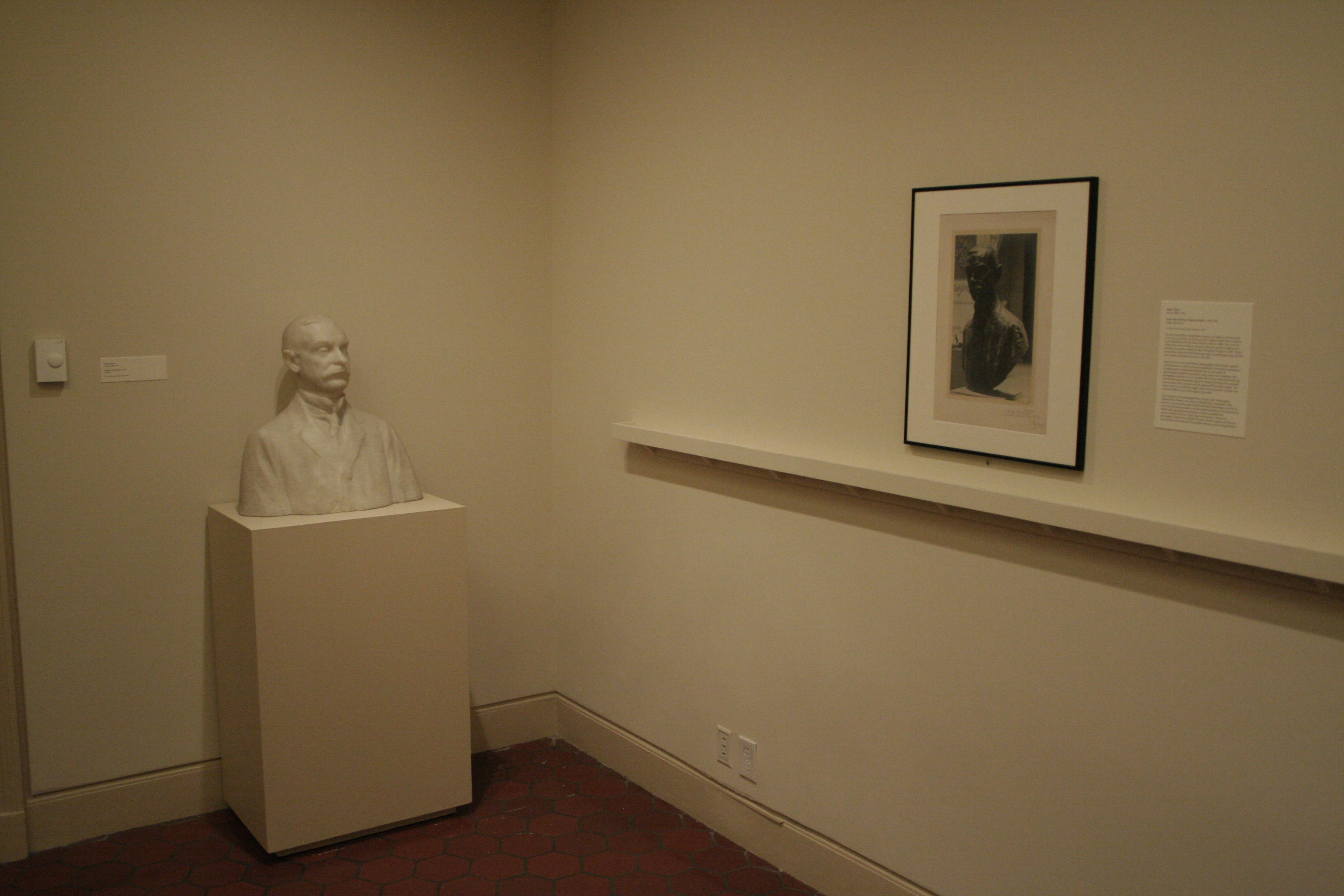June 15, 2011 — A recent acquisition of a vintage photograph to the University of Virginia Art Museum has added surprising significance to one of the museum's longtime pieces.
The photograph by Eugène Druet depicts a bronze bust of a sculpture by Auguste Rodin, a reproduction of a marble statue that the University acquired in 1950. (One bronze version is in the collection of the National Gallery of Art in Washington.)
Listen to the UVA Today Radio Show report on this story by Kate Colwell:
Museum director Bruce Boucher said the museum was approached by the Iris & B. Gerald Cantor Foundation in Los Angeles as an appropriate recipient of the photograph because the museum possessed the marble statue.
"The director of the Cantor Foundation suggested that this would be a good fit for us, and in fact it turned out to be more interesting than we thought originally," Boucher said.
The photo is a gift from the Cantor Foundation, he said, one of the museum's 37 new acquisitions or gifts in the past year.
Side by side, the marble carving and the photograph of a bronze bust allow the viewer to compare and contrast the different depictions of streetcar tycoon Thomas Fortune Ryan, Rodin's patron. As explained by Matthew Affron, curator of modern art and academic curator, the installment reveals new aspects of each piece.
"Druet was admired at the time for the great beauty of his rendering of the form," Affron said. "The play of light and dark on the surface of Rodin's sculptures and looking at the photograph allows us to focus in new ways on what you can see in the marble. Suddenly the smoothness of the marble, the perfection of its surface … stands out in relief against the other effects achieved in the bronze as recorded in the photograph."
One of the big differences between the statues, Affron explained, is in the handling of the surface and the texture of the object.
"The bronze version records Rodin's own handwork … so the surface of the bronze has a beautiful play of light and shadow and texture, ridges, smoothed-out spaces," said Affron, who also is an associate professor of art in the College of Arts & Sciences.
By showing the work in stone and the image of the metal, the museum hopes to educate visitors about the opportunities and restrictions associated with different mediums.
"Putting them together on display here is a good teaching moment because people can see what we often forget, but which was very important to a sculptor like Rodin, and that is the end medium of a work of art really will condition the way the surface is treated," Boucher said.
Additionally, an autographed inscription from Rodin to American patron Kate Simpson, which can be seen on the photograph, enhances its value as a part of the collection history of America.
Ryan, the subject of the sculpture, also is a figure of historical interest thanks to his connections to the Charlottesville community. In 1911, he donated to the University the Frederic Edwin Church painting, "Natural Bridge," which would become one of the first exhibited pieces when the museum opened in 1935. Ryan's family, which lives in Virginia, donated the marble bust to the art museum. Ryan's history with the museum adds an extra layer of meaning to the acquisition as part of the collection.
"In a way, it enhances our presentation of a very important patron to the institution and it also allows you to learn about the patronage in America of Rodin at the time that Ryan was interested in Rodin, which was in the first decade of the 20th century," Affron said.
The photograph enhances the museum's established collection of 19th- and 20th-century photography and its growing sculpture collection. It also enriches the Rodin collection, which includes a bronze sculpture of "The Kiss," an early etching from the beginning of Rodin's career in the 1880s and a photograph of the artist by Edward Steichen.
Affron described the photograph as "a work that connects the dots to many aspects of what we already have. … We have all sorts of connections to Rodin; this adds another important piece to the puzzle."
The photo of the bronze bust will remain on display with the marble bust at the museum until August.
Media Contact
Article Information
June 15, 2011
/content/vintage-photo-sheds-new-light-some-uva-art-museums-oldest-pieces

